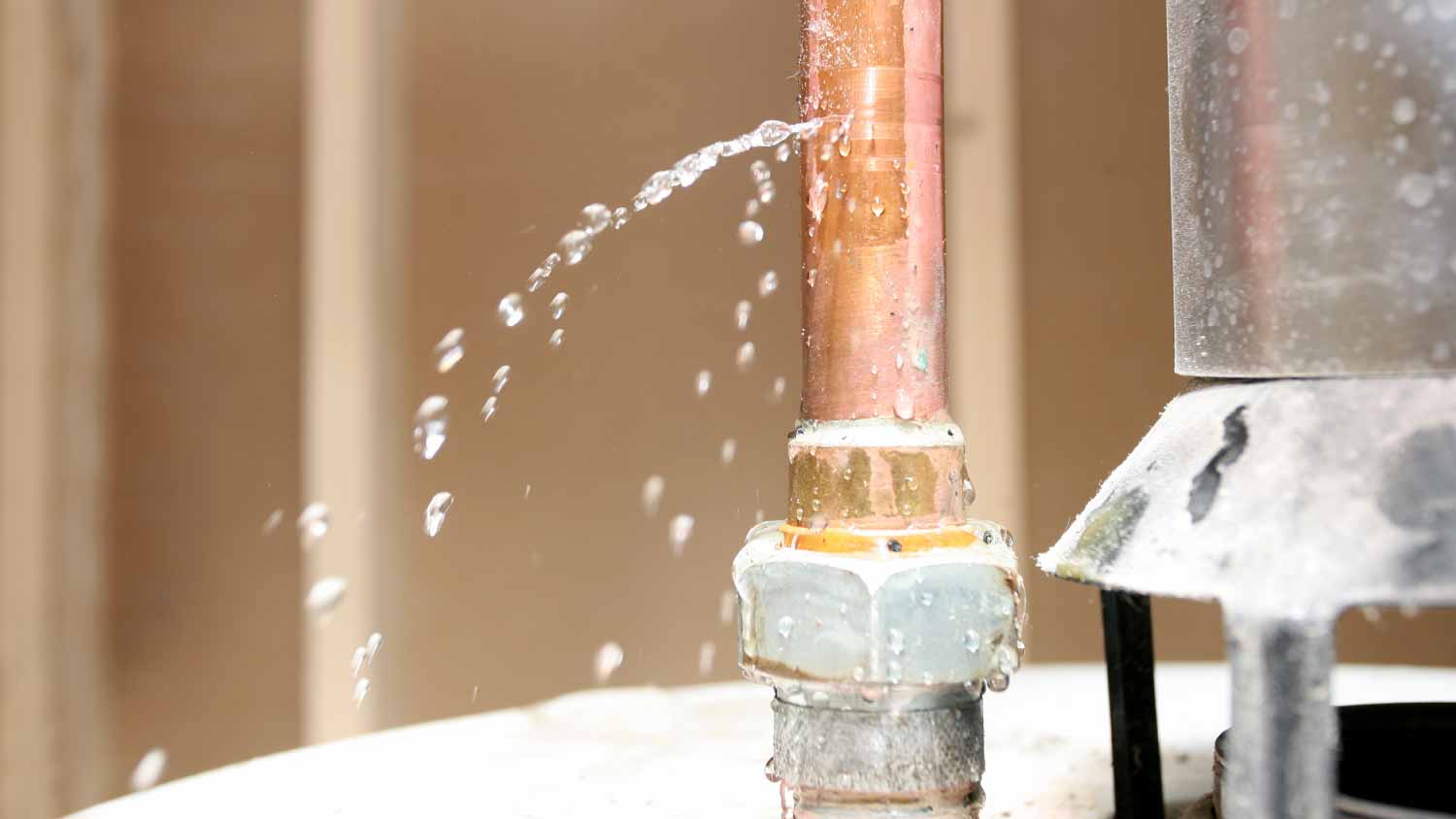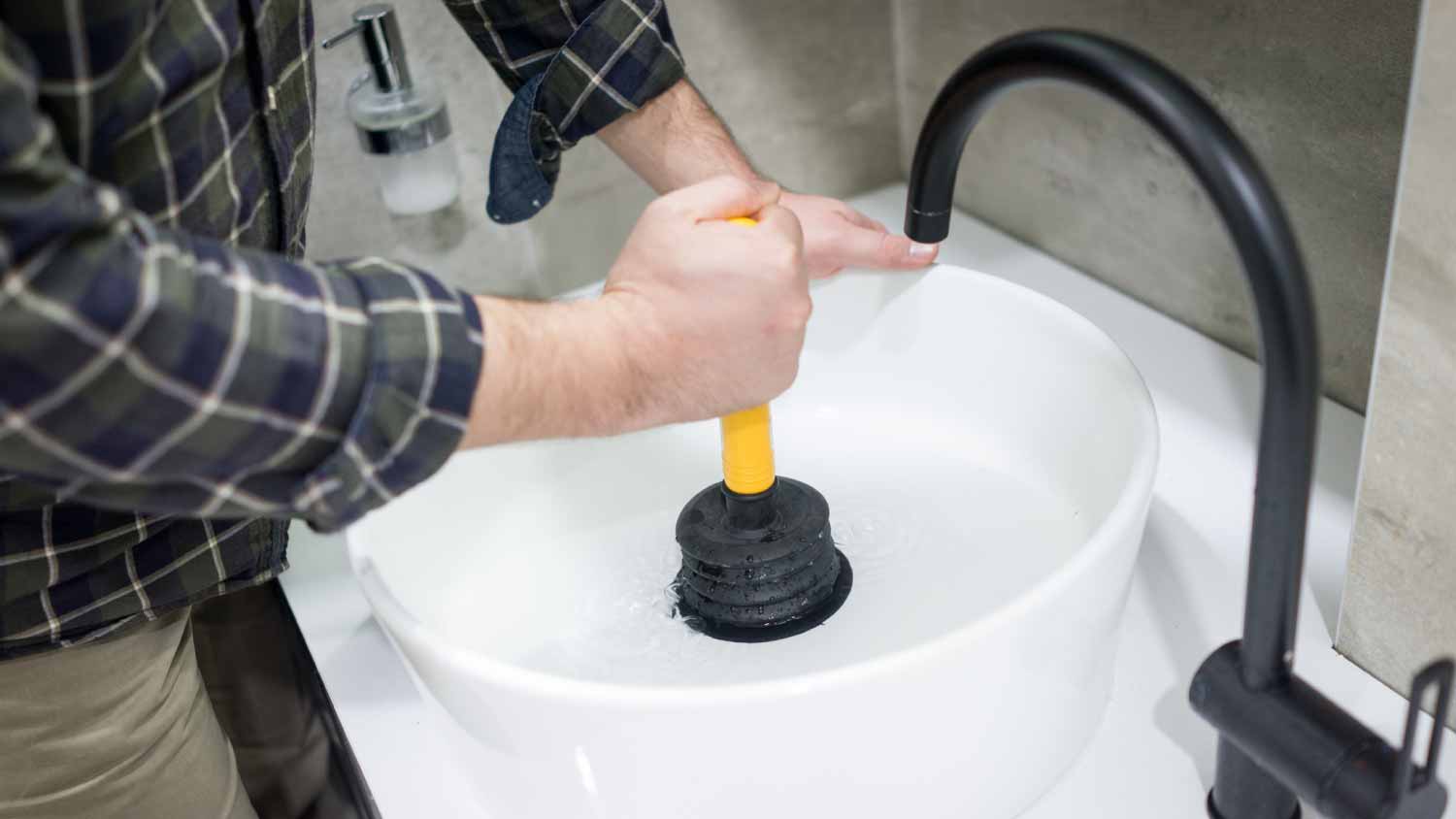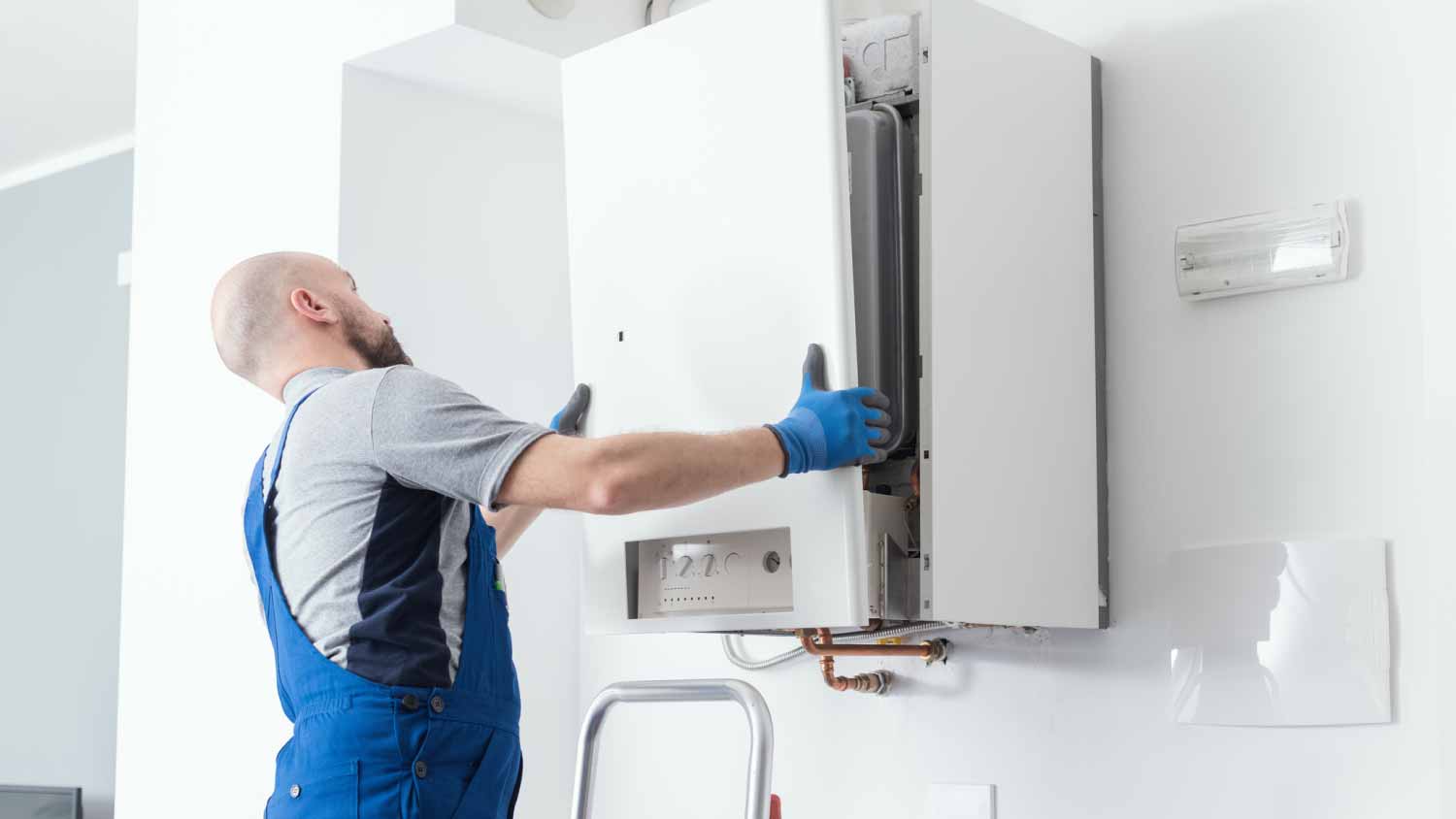10 Most Common Plumbing Problems Every Homeowner Should Know
Know what leaks and drips to look for and what to do next


You can fix some plumbing problems yourself.
Some plumbing problems require the expertise of a professional plumber.
Knowing the warning signs can save you money and headaches.
Plumbers typically charge $45 to $200 per hour.
At some point in your life, you’ve probably encountered at least a few of the most common plumbing problems—dripping faucets, leaky pipes, and clogged drains and toilets, at least. But what are the most common plumbing issues, and what should you know about them? Knowing what’s going on can help you figure out what’s going on and whether it’s something you can tackle as a DIY job or if you need to call a local plumber to take a look and fix it.
1. Dripping Faucets
Besides being annoying—once you hear it, good luck ignoring it—dripping faucets translate to money down the drain. According to the Environmental Protection Agency (EPA), one leaky faucet dripping once per second adds up to about 3,000 gallons of water wasted over the course of a year.
On top of the wasted water, the minerals in your water can leave rust and other stains on your sink and fixtures such as the drain plug or the faucet itself. Fixing a drippy faucet can be as simple as installing new O-rings or gaskets, or tightening part of the faucet, depending on how your faucet is constructed.
2. Leaky Pipes

Whether it’s drain pipes under the sink or a pipe in the wall, leaky pipes are bad news and more common than anyone would like. No matter where a pipe is leaking, the damage it causes around and below it becomes the major problem. Water damage to wood causes rot. Soaking drywall leaves stains and can blister paint. Leaks undetected inside walls or under carpet can lead to dangerous mold issues that can make people sick. Some leaks just develop over time, and some may be from bad plumbing that should be fixed or redone, and it may be worth getting estimates for how much it costs to repipe your house.
The cost to repair leaky pipes depends where a pipe is leaking, how accessible it is, and the extent of the water damage. No matter how common leaky pipes are, it’s urgent to fix them as quickly as possible. Sometimes you can shut off the water supply to fix the leak temporarily, but you’ll need to repair the problem ASAP. Maybe it’s a DIY fix like simply tightening a fitting, or it could require the expertise of a plumber.
3. Running Toilets

Sometimes you don’t realize the toilet has been running for possibly hours until you go back to the bathroom and it’s still going from the last time you flushed. Sometimes you hear the water running as it attempts in vain to refill the toilet tank. The perpetually running toilet is often caused by a bad flapper seal or a sticky float that won’t rise enough to shut off the water supply. Another potential cause is the chain catching on itself or another part and keeping the flapper from lowering enough to seal.
4. Clogged Toilets
This plumbing problem usually comes up on you quickly when you flush the toilet and the water rises rather than swirls down the drain. Sometimes you know exactly what caused it—too much toilet paper, for example—and sometimes the clog is farther down the line. If a plunger doesn’t work to unclog your toilet, you may need to resort to other methods like a drain snake or other drain-cleaning tools. The major problems with a clogged toilet are that if it overflows, the water is unsanitary and the flooding can cause water damage to flooring, walls, and any rooms below the bathroom.
5. Clogged Drains

As with the clogged toilet (minus the usual materials flushed down the toilet), a clogged sink, shower, or bathtub drain can cause minor flooding or at least make it inconvenient to use the sink. However, the floor drain may back up with sewage, which is not only a stinky problem but an unsanitary one.
Similar to the toilet, a drain snake may work to clear the obstruction, which is often buildup of hair, grease, and other materials that coagulate or build up. A chemical drain cleaner may do the job, but always follow the directions on the packaging, as the fumes and the chemicals themselves can be harmful to your eyes, skin, lungs, and mucus membranes.
6. Low Water Pressure
Trying to take a shower or use the sink to rinse or clean something can become frustrating very quickly when you’re experiencing low water pressure. You can begin investigating at the faucet or shower head, as limescale and calcium can build up in the mesh screen inside and restrict water flow. If that’s not the case, a few other situations can cause low water pressure in your home.
7. Water Heater Not Working

You never forget your first cold shower after the water heater stops working. Among the many potential plumbing problems, the water heater quitting is among the common ones, unfortunately. However, keeping up with regular plumbing maintenance can pay off in the long run.
Also, it helps to know the warning signs your water heater is about to fail, such as leaks, discolored water, foul odor, or lukewarm water, you can avoid that cold shower most of the time. Many times, descaling and flushing or replacing a part such as an anode rod, valve, or thermostat can get you back in hot water (in a good way). If you’ve got a leaky tank, you’re most likely going to need to replace your water heater. On average, repairing a hot water heater ranges from $100 to $1,700.
8. Leaking Hose Bibb or Spigot
Sometimes the plumbing issues are outside the house, but can still cause bigger problems if left unfixed. Water running down beside the foundation can end up leaking into the crawlspace or basement. Over the winter, any water left in the pipe can freeze and cause cracks in the spigot or the pipe itself. A good way to prevent this is to shut off the water supply (usually inside the house near where the pipe goes out through the wall to the spigot) and drain any remaining water from the pipe by opening the hose bibb or spigot. You can also use a frost-proof hose bibb can help prevent the freezing and cracking that causes leaky spring hose connections.
9. Main Water Line Break

The water main that delivers the water into your home from the municipal water supply can sometimes break or spring a leak. If the leak is part of the municipal water main, call your local water department to let them know. A crew will likely be sent out to fix the problem. However, if the leak or main line break is between your house and the main valve, then you should hire a licensed plumber ASAP. Lots of water can gush from a water main in a very short time and cause flooding in your yard and potentially in your home, depending on the grade and how close the break is to the house. This is not a project to DIY, as it usually requires special equipment and expertise to find the leak and fix it.
10. Sewer Line Clogs or Breaks
The sewer line is the drain line that takes your wastewater from the shower, dishwasher, sinks, and toilets out to the main city sewer line. If you have a septic tank, the line carries the waste to your septic tank and septic field. When the line breaks or leaks, it often shows up as a bubbling, gurgling puddle of sewage in the yard. Because the sewage carries harmful bacteria, it’s important to get it fixed immediately. This is a legitimate plumbing emergency. The smell will certainly act as an incentive, too.
You may also see warning signs that the main sewer line is clogged, you’re probably getting water backup inside your house. The clog will keep toilets, showers, and sinks from draining properly and cause the wastewater to just sit and sometimes overflow the shower or toilet, depending how far down the line it is.
Know When to Call in the Pros
As satisfying as it is to tackle plumbing issues on your own, it’s important to know when to ask for help from the professionals. Common plumbing problems like a running toilet or a leaky faucet can be relatively easy DIY fixes with the right tools and a bit of research. However, some plumbing problems like water main breaks, sewer main breaks or clogs, and some water heater issues should really be done by a licensed plumber. Plumbing repair costs vary depending on the kind of repairs and how dire the emergency. Plumbers usually charge anywhere from $45 to $200 per hour. The peace of mind and time saved by hiring a pro is well worth it.





- Gas Plumbers
- Plumbing Repairs
- Sump Pump Installation
- Wood & Pellet Stove Repair
- Shower Repair
- Wood Stove Services
- Emergency Plumbers
- Fire Sprinkler Contractors
- Perc Test Companies
- Toilet Repair & Installation
- Boiler Repair
- Sewer Line Repair
- Faucet Repair
- Main Drain Camera Companies
- Foundation Drain Installation
- French Drains
- Bathtub Replacement
- Subcontractors
- Storm Drain Contractors
- Affordable Plumbing
- Plumbing & Heating Companies
- Bathroom Repair Services
- Sink Installation
- Commercial Plumber
- Barndominium Builders
- Water Line Repair
- Faucet Installation
- Water Line Installation
- Leak Detection
- 18 Common Plumbing Problems and How to Resolve Them
- 14 Preventive Plumbing Maintenance Tips You Should Know
- 6 Reasons Your Bathroom Sink Is Draining Slowly and Potential Solutions
- Can You Use Water if the Water Heater Is Leaking?
- Why Does My Faucet Water Smell?
- 6 Temporary Fixes for Leaking Pipes
- Can Frozen Pipes Cause Blocked Sink Drains?
- How to Spot a Frozen Water Heater and Fix Frosted Plumbing
- 4 Reasons to Turn off Your Water Before a Long Vacation
- 11 Handy Tips and Tricks to Help With Your Next Home Project










